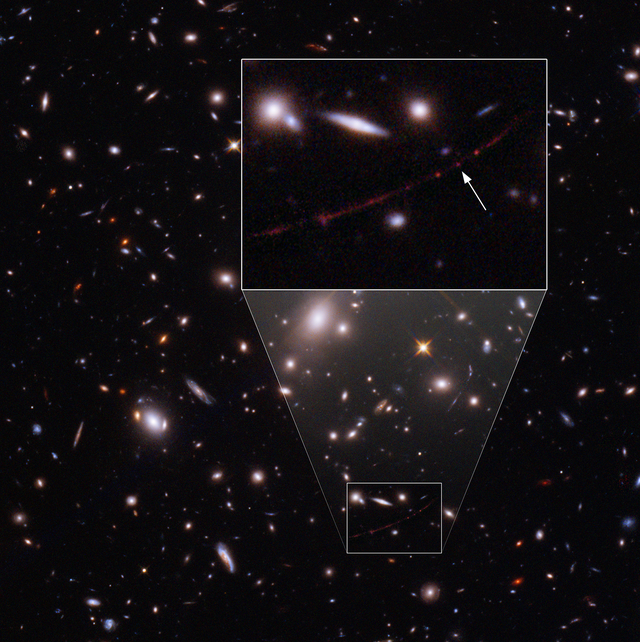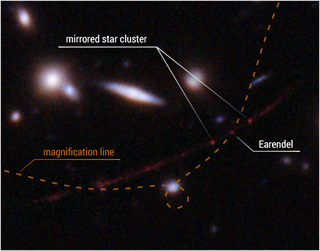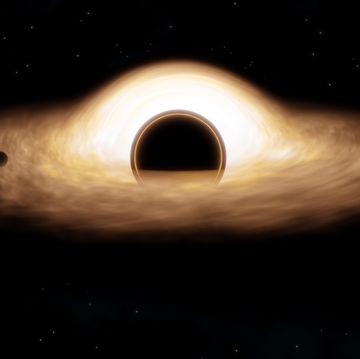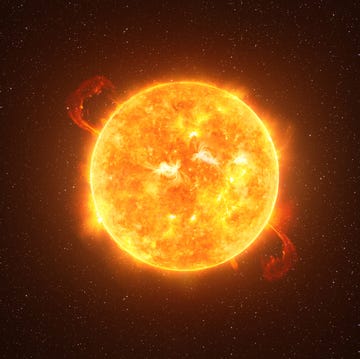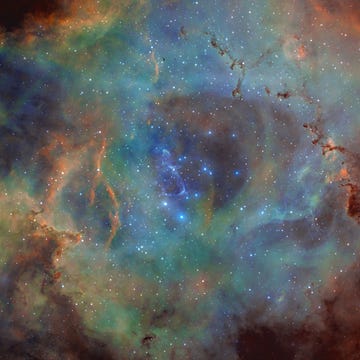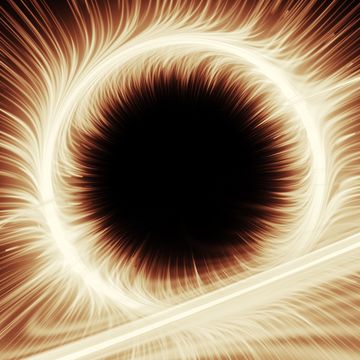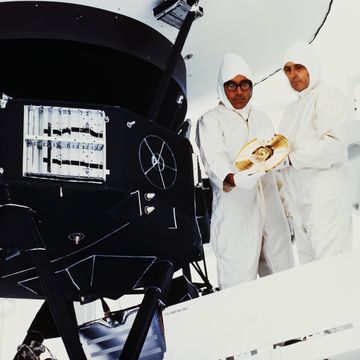- The Hubble Space Telescope recently found the farthest known star in a distant galaxy known as the Sunrise Arc.
- It literally took the stars aligning to create a phenomenon known as “gravitational lensing” in order to spot the ancient star. A new paper in Nature describes the incredible event.
- NASA will use the James Webb Space Telescope to further analyze the exciting discovery and see what it can tell us about our early universe.
Like something out of a sci-fi movie, the Hubble Space Telescope discovered the most distant star ever seen—through a cosmic fluke.
Nicknamed “Earendel,” the star’s light took 12.9 billion years to reach Earth, and scientists believe it emitted light throughout the first billion years of our universe’s existence. Beside its age, Earendel’s position is also curious. According to NASA, Hubble was able to detect the star thanks to gravitational lensing, a phenomenon in which a massive object (like a galaxy) warps the fabric of space. When light reaches the warped space, it can act like a magnifying glass and highlight objects we’d otherwise have a difficult time seeing.
🌌 Let’s explore the cosmos together, join Pop Mech Pro.
And that’s how Earendel—whose Old English name is akin to “morning star” or “rising light”—was found (though Tolkien fans will recognize it as a riff on Eärendil, the half-Elven seafarer who carried a Silmaril).
“Earendel was aligned on or very near a ripple in the fabric of space created by [galaxy cluster WHL0137-08’s] mass, which magnified its light enough to be detected by Hubble,” NASA said in a March 30 press release. In fact, we might’ve missed the star had it been positioned elsewhere—it took a serendipitous combination of the Hubble telescope’s ultra high-tech tools and the gravitational lensing caused by WHL0137-08 to create the natural magnifying glass that helped us spot Earendel.
This cosmic wonder beats out the previous record-holder for furthest known star—a gigantic blue star dubbed “Icarus,” which formed around 9.4 billion years ago and shined brightly for approximately four billion years post-Big Bang. Don’t confuse Earendel with Methuselah, either; Hubble discovered that star in 2013 and it currently holds the record for being the oldest known star at about 14.5 billion years old.
Although Earendel is not the most distant object we’ve ever observed in space—galaxy GN-z11, for example, is estimated to exist a mere 400 million years post-Big Bang, and galaxy UDFy-38135539 exists about 600 million years post-Big Bang—what makes it really special is that we were able to see its individual light. Usually, when we see stars, it’s as a cluster of far-off lights, resulting from hazy-looking stars several billion light-years away.
But that’s not the only impressive thing about this exciting find; the star is reported to have at least 50 times the mass of our sun and shines “millions of times as bright.” Scientists will utilize NASA’s James Webb Space Telescope to measure Earendel’s brightness and temperature to figure out what type of star it is and where it is in its lifecycle.
Earendel may soon be able to tell us more about what other stars were like closer to the inception of our universe.

